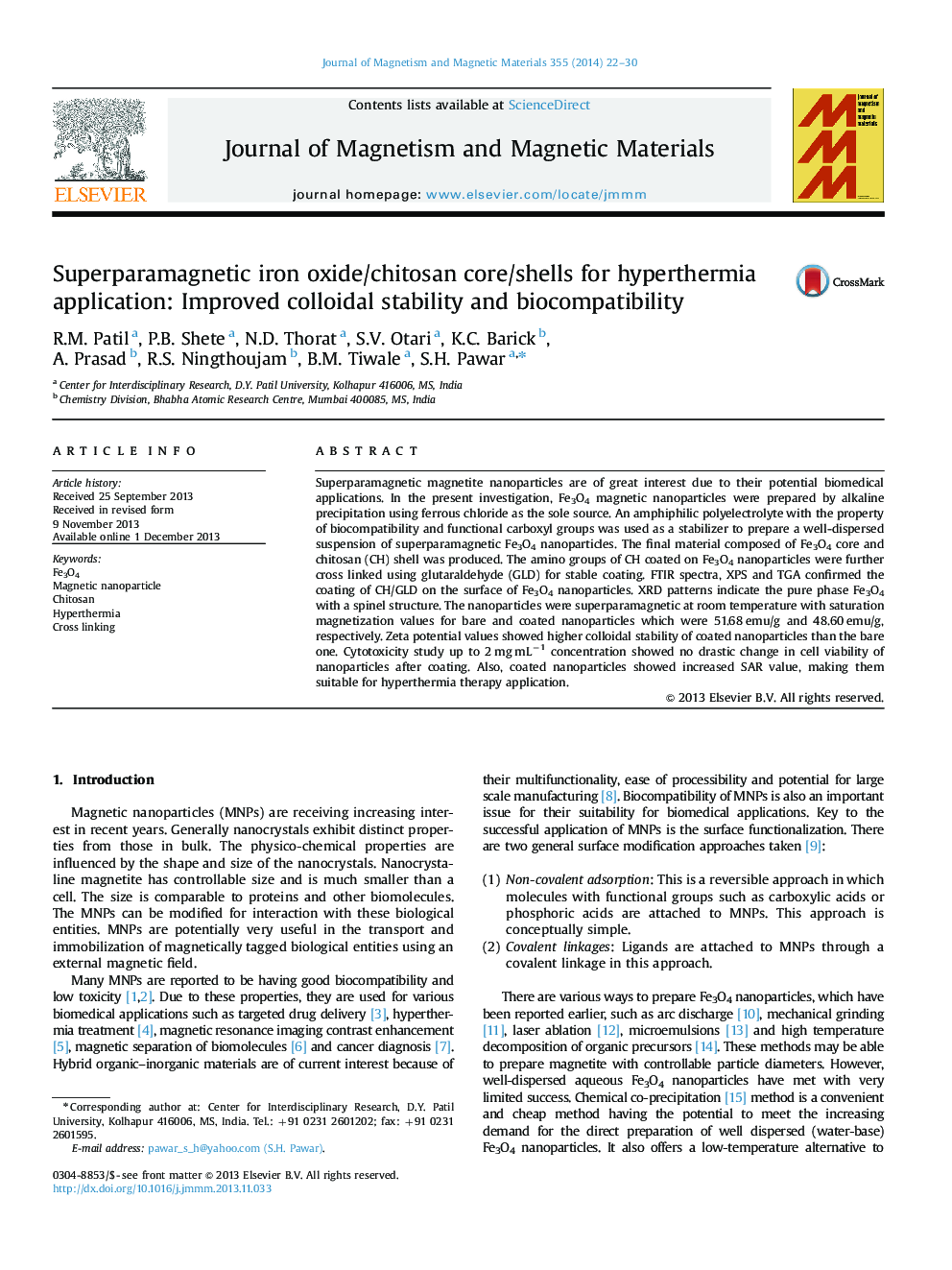| Article ID | Journal | Published Year | Pages | File Type |
|---|---|---|---|---|
| 1799789 | Journal of Magnetism and Magnetic Materials | 2014 | 9 Pages |
•Fe3O4 nanoparticles were synthesized from FeCl2 as the sole source by alkaline precipitation.•Coating of Fe3O4 nanoparticles was done with chitosan by simple ultrasonication.•Chitosan cross-linked with glutaraldehyde.•High colloidal stability was observed.•Increased SAR value and least cytotoxicity were observed.
Superparamagnetic magnetite nanoparticles are of great interest due to their potential biomedical applications. In the present investigation, Fe3O4 magnetic nanoparticles were prepared by alkaline precipitation using ferrous chloride as the sole source. An amphiphilic polyelectrolyte with the property of biocompatibility and functional carboxyl groups was used as a stabilizer to prepare a well-dispersed suspension of superparamagnetic Fe3O4 nanoparticles. The final material composed of Fe3O4 core and chitosan (CH) shell was produced. The amino groups of CH coated on Fe3O4 nanoparticles were further cross linked using glutaraldehyde (GLD) for stable coating. FTIR spectra, XPS and TGA confirmed the coating of CH/GLD on the surface of Fe3O4 nanoparticles. XRD patterns indicate the pure phase Fe3O4 with a spinel structure. The nanoparticles were superparamagnetic at room temperature with saturation magnetization values for bare and coated nanoparticles which were 51.68 emu/g and 48.60 emu/g, respectively. Zeta potential values showed higher colloidal stability of coated nanoparticles than the bare one. Cytotoxicity study up to 2 mg mL−1 concentration showed no drastic change in cell viability of nanoparticles after coating. Also, coated nanoparticles showed increased SAR value, making them suitable for hyperthermia therapy application.
